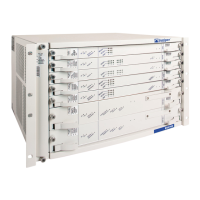CAM Hardware Classifiers ! 111
Chapter 4: Policy Resources
host1(config-policy-list-classifier-group)#forward
host1(config-policy-list-classifier-group)#exit
host1(config-policy-list)#classifier-group clacl2
host1(config-policy-list-classifier-group)#forward
host1(config-policy-list-classifier-group)#exit
host1(config-policy-list)#classifier-group *
host1(config-policy-list-classifier-group)#filter
host1(config-policy-list-classifier-group)#exit
host1(config-policy-list)#exit
host1(config)#
In two cases a single classifier entry consumes more than one CAM entry:
! When a classifier entry contains a port range. For example:
host1(config)#ip classifier-list clacl3 tcp any any range 5 8
! When a classifier entry contains the not keyword. Although this keyword is
supported for IP classifier lists, we recommend that you not use it—you can
usually achieve the desired behavior without this keyword.
host1(config)#ip classifier-list clacl4 ip not host 1.1.1.1 any
In these cases, the actual number of entries that are consumed depends on the
configuration.
Size Limit for IP and IPv6 CAM Hardware Classifiers
The maximum width of a CAM hardware classifier entry for IP or IPv6 in a single
policy is 128 bits.
Some independent classifiers share the same classifier entry location, while others
are combined together to form a larger classifier field. However, you cannot
configure any combination of classifiers that exceeds the total classifier entry size of
128 bits.
IP Classifiers and Size Limits
Ta b l e 1 6 lists all IP classifiers and the size limit of each classifier entry.
Table 16: Size Limit of Individual IP Classifiers
IP Classifier Size Limit (Bits)
Color 2
Destination address 32
Destination port 16
Destination route class 8
ICMP type 8
ICMP code 8
IGMP type 8
IP flags 3
IP fragmentation 2

